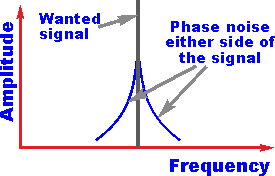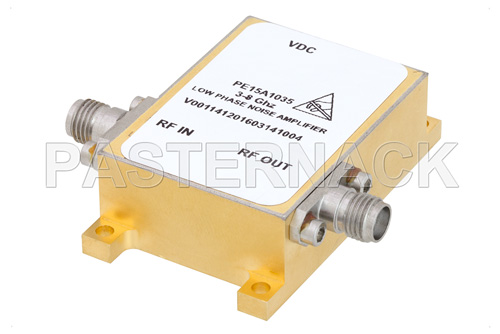Phase noise and its time-domain counterpart, jitter have been studied in radar and communications systems since the phenomenon was first observed. Though always a concern, recent advances in high-speed digital modulation schemes and advanced radar, which also used complex digital modulation techniques for pulse compression, have led to radar and communication systems being more susceptible to phase noise performance degradation.
High-speed Digital Modulation Methods are More Phase Noise Susceptible
 In a standard constellation diagram, or constellation plot, phase noise can be observed as the rotational blurring of the symbol location, over repeated trials, around the ideal symbol location. In low symbol position count digital modulation methods, this isn’t of particular concern. However, in higher quadrature amplitude modulation (QAM) systems and other high symbol location count modulation methods, inter-symbol interference can increase dramatically due to phase noise. Depending upon the density of the symbols, a communication scheme may even be phase noise limited, as opposed to interference or noise limited. This is a growing concern while evaluating upcoming 5G waveform candidates.
In a standard constellation diagram, or constellation plot, phase noise can be observed as the rotational blurring of the symbol location, over repeated trials, around the ideal symbol location. In low symbol position count digital modulation methods, this isn’t of particular concern. However, in higher quadrature amplitude modulation (QAM) systems and other high symbol location count modulation methods, inter-symbol interference can increase dramatically due to phase noise. Depending upon the density of the symbols, a communication scheme may even be phase noise limited, as opposed to interference or noise limited. This is a growing concern while evaluating upcoming 5G waveform candidates.
Doppler Radar and Digital Pulse Compression Techniques Must Also Beware Phase Noise
 With radar systems, phase noise can be equally disruptive, specifically with Doppler radar and with advanced pulse compression techniques that rely on digital modulation methods. Using Doppler radar as an example, the range and velocity calculations for these radar are derived directly from the conversion of the frequency offset and shift of the original transmitted signal and the return signal. Any variation in the frequency offset or shift will result in an error to the frequency-to-time conversion of the Doppler radar, inducing range and velocity inaccuracy. Over long ranges, or while monitoring fast moving targets, phase noise variations in frequency accuracy could cause unacceptable radar performance degradation.
With radar systems, phase noise can be equally disruptive, specifically with Doppler radar and with advanced pulse compression techniques that rely on digital modulation methods. Using Doppler radar as an example, the range and velocity calculations for these radar are derived directly from the conversion of the frequency offset and shift of the original transmitted signal and the return signal. Any variation in the frequency offset or shift will result in an error to the frequency-to-time conversion of the Doppler radar, inducing range and velocity inaccuracy. Over long ranges, or while monitoring fast moving targets, phase noise variations in frequency accuracy could cause unacceptable radar performance degradation.
Additive Phase Noise Can’t Be Ignored
Though phase noise is typically relegated to an oscillator selection concern, the additive phase noise from amplifiers, mixers, and other active and passive signal chain components, can also become a limiting factor in the overall system phase noise performance. If the phase noise performance of the oscillator, used as a local oscillator (LO) for upconversion or downconversion, is adequate, but the additive phase noise of the low-noise amplifier (LNA) from the LO driving the mixer–and the mixer’s phase noise performance–is poor, then the overall phase noise in the signal may be below the expected range. As LNAs, power amplifiers (PAs), and mixers are used in many radar and communications architectures, extensively, the additive phase noise of these components must also be considered in phase noise limited designs.




 Pasternack Blog
Pasternack Blog
